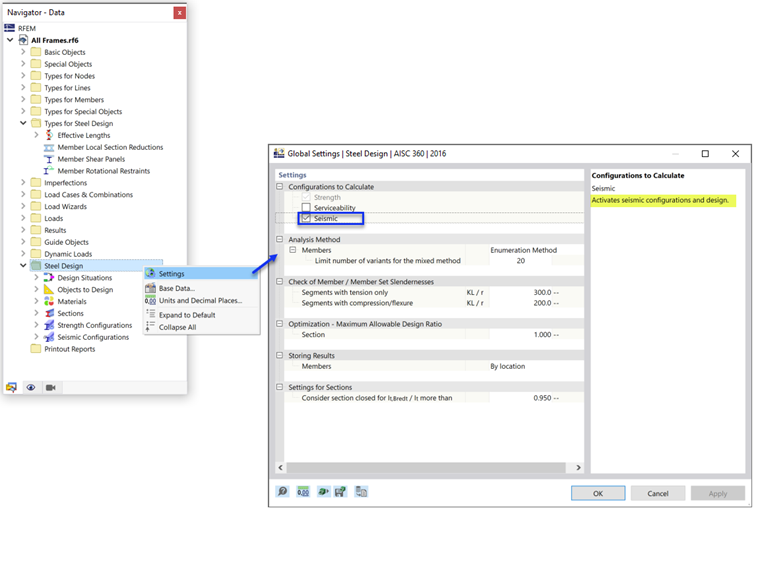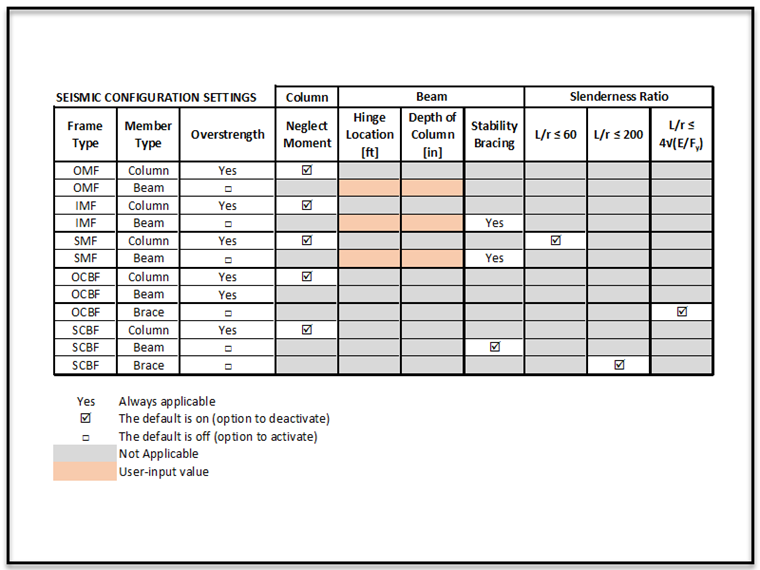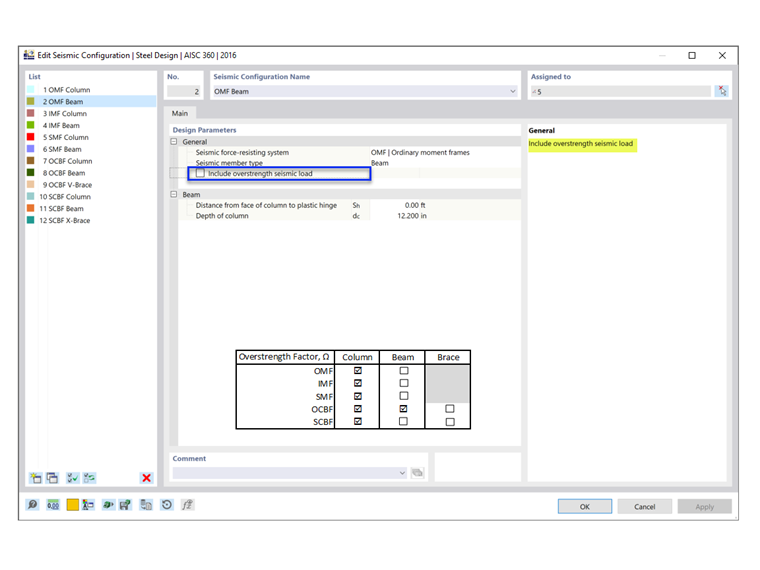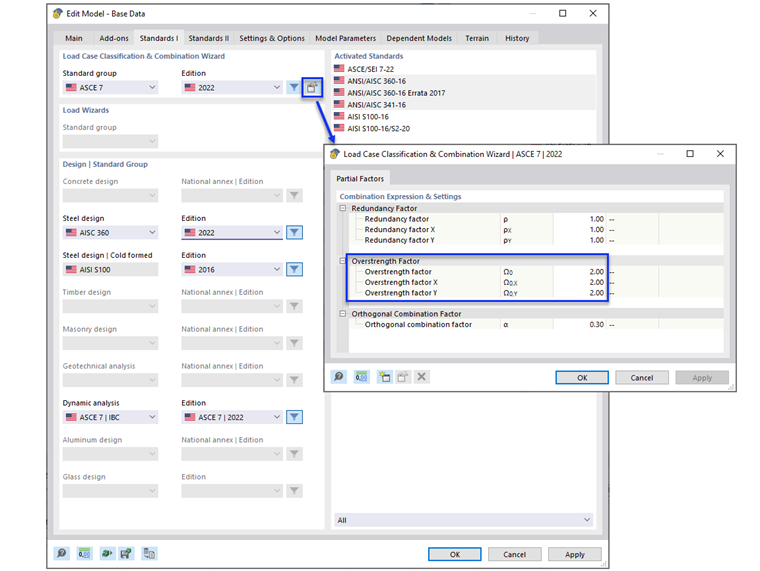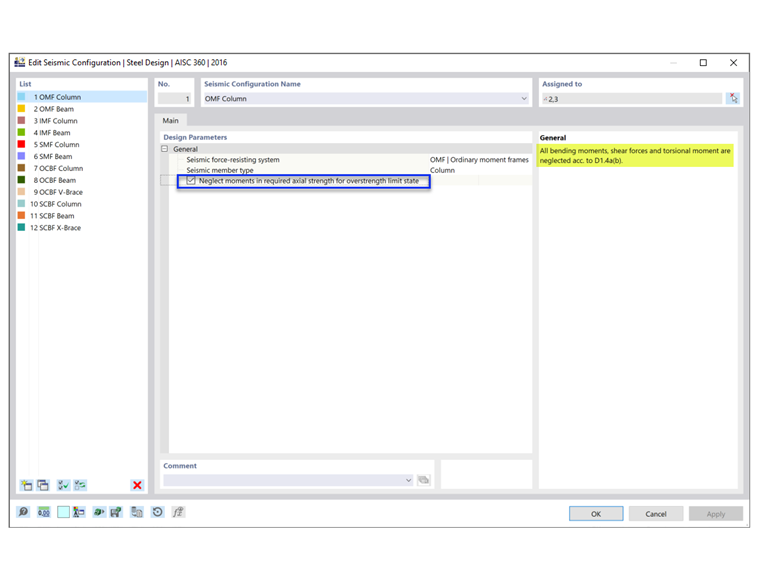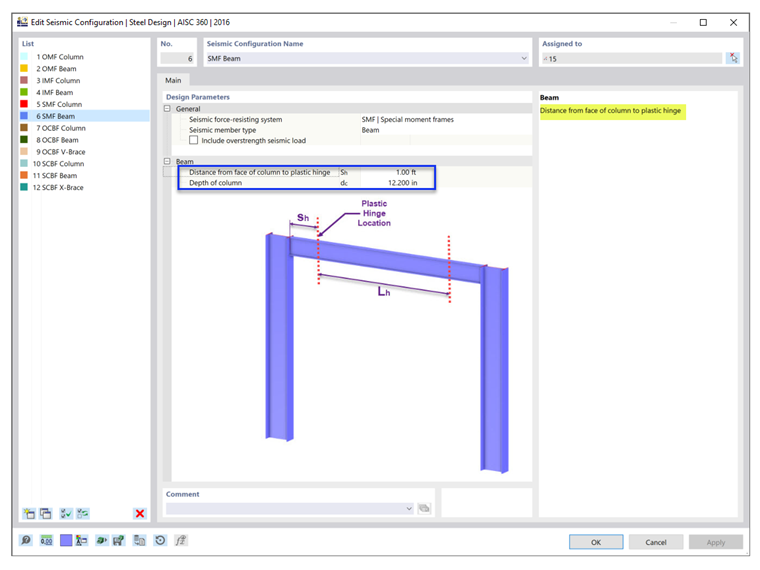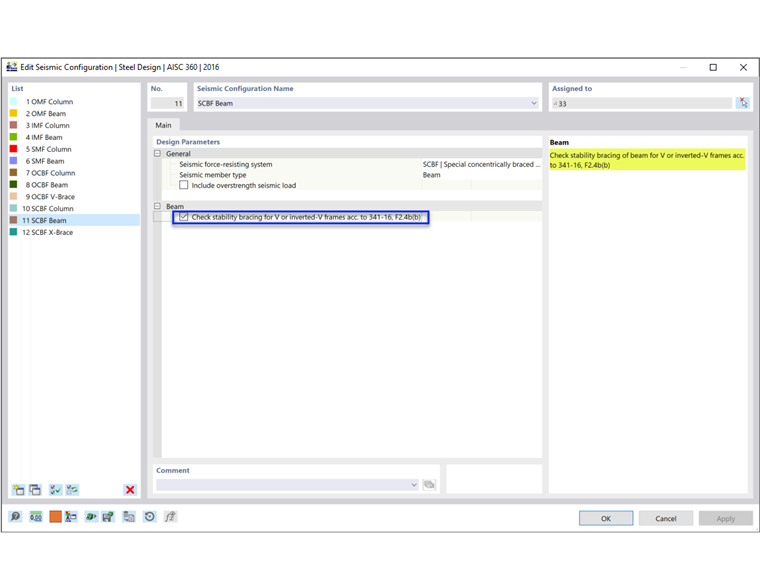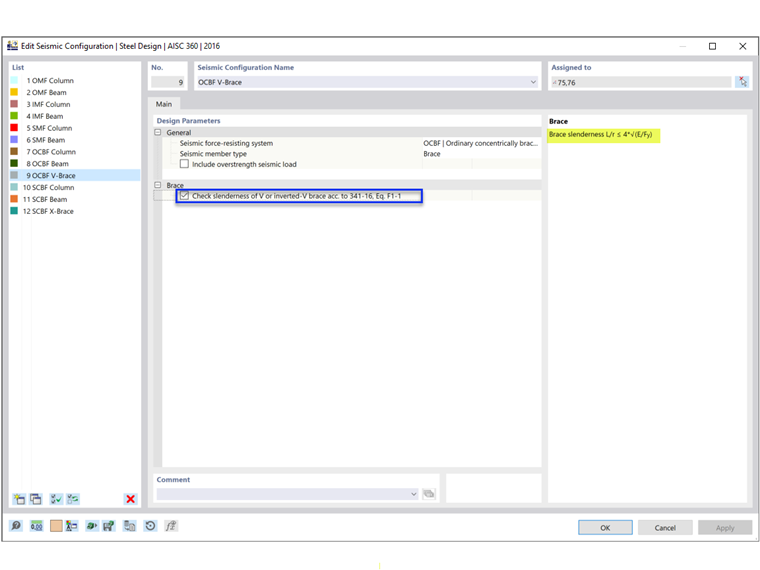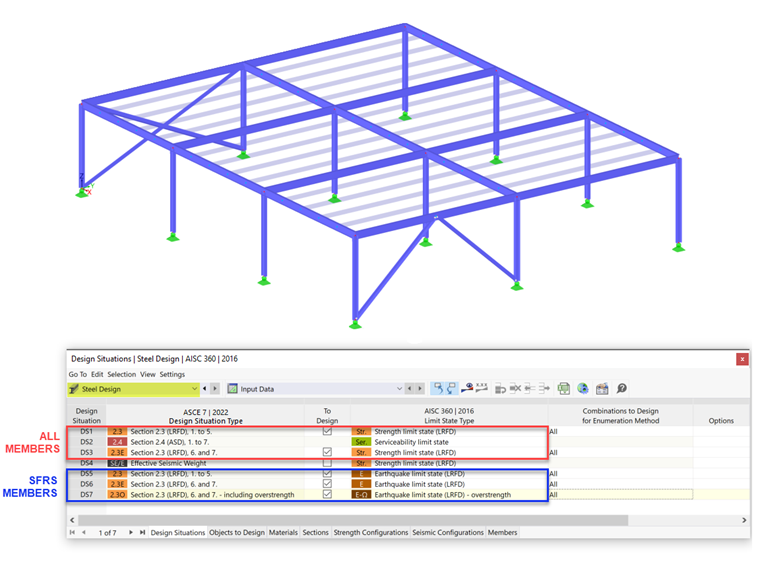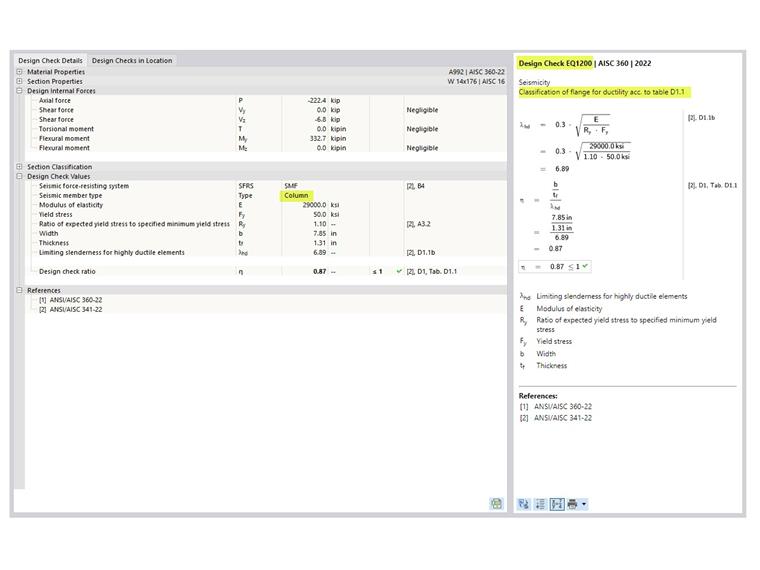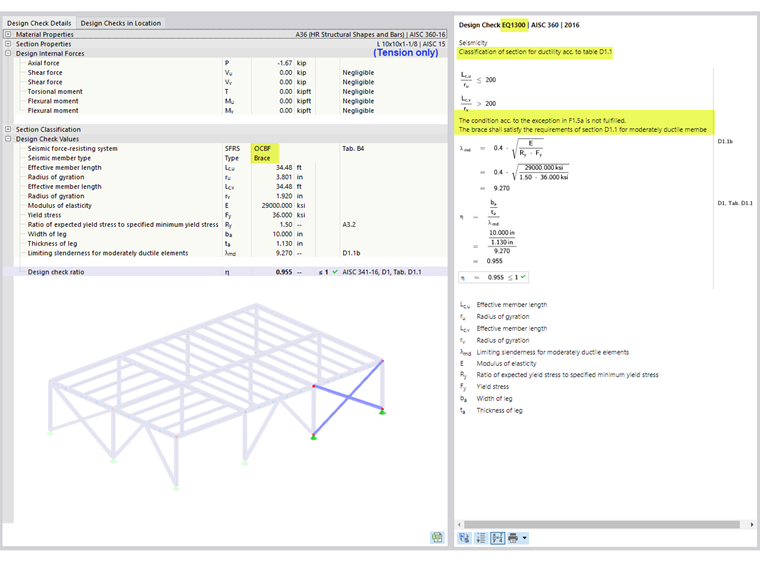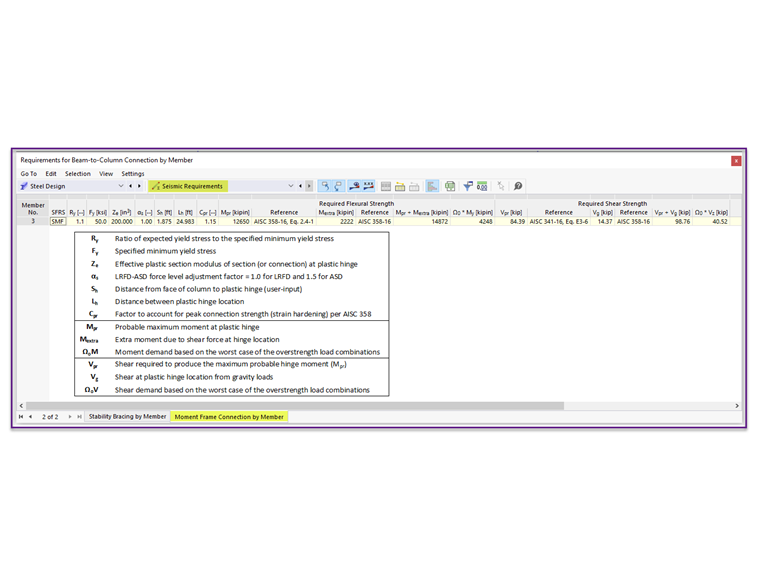Seismic Configurations are currently available for the steel design using the following standards:
- AISC 360
- CSA S16
These configurations control the criteria by which the seismic verification of an object is performed. Here you can define the seismic force-resisting system (SFRS) type for the seismic design according to AISC 341 [1] or CSA S16 Clause 27.
The seismic configuration can be activated in the Global Settings.
AISC 360
General
In this category, you define the seismic force-resisting system and member type.
Seismic Force-Resisting System
There are five types of seismic force-resisting systems (SFRS) available in the list.
Member Type
Use the list to define the seismic member type. The options depend on which SFRS you have selected.
Various settings and inputs need to be considered depending on the SFRS type and member type selected for each configuration. These options are summarized in the table below. The member type “Strut” is reserved for multi-tiered braced frames (future release).
Include Overstrength Seismic Load
The overstrength factor, Ωo, is an amplification factor applied to the forces in certain elements in the seismic load path. The purpose is to prevent a weak link from occurring prior to the full energy dissipation and reaching the ductility potential of the primary SFRS. For example, in order for the diagonal brace in a steel braced frame to yield and dissipate energy in a controlled manner, all other elements of the load path (e.g., connections, columns, and collectors) need to be stronger than the maximum anticipated strength of the brace. Therefore, the design of those elements is based on the amplified loading using the overstrength factor.
When the “Include overstrength seismic load” box is selected, the overstrength factors are considered in the load combinations. As a result, the member is designed with the amplified loads. The columns are always required to be designed with the amplified loads and, therefore, the option to deactivate is not shown. The same is true for beams in OCBF.
Column Strength: Neglect Moments for Overstrength Limit State
All columns in a seismic force-resisting system (SFRS) are required to be designed with overstrength loads. In many cases, the amplified axial force does not need to be combined with the concurrent bending moments. The option to neglect all bending moments, shear, and torsion for the overstrength limit state of column type members is activated by default.
For standard load combinations without overstrength from seismic load effect, the combined loading according to AISC Chapter H is checked. For overstrength load combinations, the Chapter H check is ignored when the "Neglect moments" option is selected. Per AISC 341-16, both standard and overstrength load combinations must be checked. This is shown in Example 4.3.2 of the AISC Seismic Design Manual.
Beam / Column / Brace
The options of the second category depend on the seismic force-resisting system and member type selected above.
Distance from Face of Column to Plastic Hinge
The plastic hinge location, Sh, and the depth of the column, dc, are used to determine the required flexural and shear strength of the beam-to-column connection.
Check Stability Bracing for V-Frames
Stability bracing of beams is required for beams in IMF and SMF to restrain lateral-torsional buckling. In SCBF, this requirement is applicable to beams with V or inverted-V frames.
Check Slenderness
AISC 341 requires a more robust slenderness ratio for columns in SMF, braces with V or inverted-V configuration in OCBF, and all braces in SCBF. The option to meet these requirements can be deactivated by the user.
Design Situation Type & Limit State Type
The Design Situation Type that includes seismic load combinations need to be added to consider the seismic loads. Careful attention must be given when applying the limit state type.
The AISC 341 seismic design is only performed when the Earthquake Limit State is selected in the Design Situations table as the limit state type. Only members with assigned Seismic Configuration are designed for all three limit state types: Strength, Earthquake, and Earthquake (overstrength). All other members that are not part of the SFRS are designed for the Strength Limit State.
The serviceability limit state is used to check for the deflection limit and can be deactivated by the user, if not needed.
CSA S16
The description is currently being prepared.
